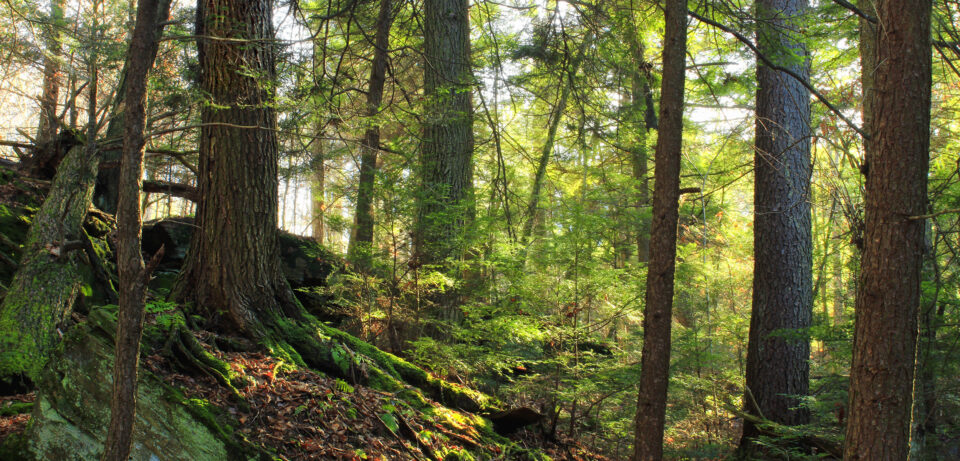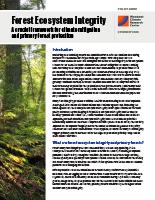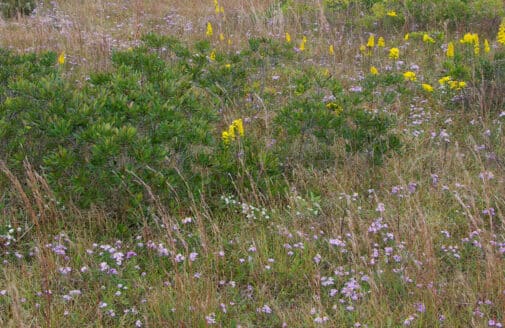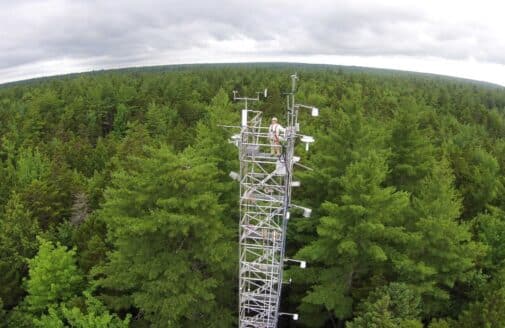Forest ecosystem integrity
A crucial framework for climate mitigation and primary forest protection

Introduction
Protecting and restoring forests are essential natural climate solutions to meeting temperature thresholds set in the Paris Agreement. Currently, there are no frameworks related to a forest’s ecological condition or the longevity of its ecosystem carbon stocks when it comes to international forest mitigation measures. Scaling both voluntary and compliance-based market mechanisms, to provide incentives for reducing emissions and enhancing forest carbon stocks, is challenged by weak information on the biophysical risks and benefits of investments in efforts to avoid deforestation and forest degradation. Market stakeholders lack spatially explicit, globally consistent metrics of forest condition and associated ecosystem services that would help to prioritize the protection of old-growth forests, particularly their carbon storage and retention. This is critical information for managing investment risk and monitoring the effectiveness of forest carbon markets based on payments for performance.
Ecosystem integrity provides a critical, holistic understanding of forest ecosystems. Although it is mentioned in international and national agreements, including the Paris Agreement, the concept of ecosystem integrity is not operationalized in forest policy. However, by considering it in policies, ecosystem integrity can be used to identify “permanence risks” i.e., some forests are more or less stable and resilient depending on their condition. Ecosystem integrity can also be used to prioritize biodiversity outcomes and other ecosystem services (such as clean water) that society depends on. Ecosystem integrity should therefore be central to global forest policy and forest-based market mechanisms. When applied, measures of ecosystem integrity suggest primary forests should receive the highest protection priority compared to other forest conditions.
What are forest ecosystem integrity and primary forests?
Forest ecosystem integrity has several definitions, but broadly speaking, it is a concept that takes into account key characteristics of a forest, including ecosystem processes, biodiversity, ecological condition (in terms of the level of degradation), and the quality and quantity of ecosystem services. Overall, it accounts for the ability of a forest ecosystem to achieve and maintain its optimal state in the face of external pressures and changing conditions.
Primary forests can be characterized as a forest mostly undisturbed by industrial land uses, such as logging or road construction. These forests naturally establish and regenerate, where on a landscape scale each successional stage (pioneer, secondary growth, old-growth) may be present. Forests that do not meet these criteria are often human-modified forests. As a result, primary forests consistently have higher levels of forest ecosystem integrity.
Ecosystem integrity and global forest policy
The risk when taking climate mitigation measures focused on forest carbon alone is the potential loss of carbon stocks due to future disturbances. However, this risk can be minimized if forest ecosystem integrity is used as the central guiding framework for global forest policy. Compared to human-modified forests, primary forests have higher levels of ecosystem integrity and lower risk profiles for future carbon loss to the atmosphere. This is because primary forests are generally more resistant, stable, and resilient and less exposed to disturbances such as wildfires, droughts, pests, wind events, degradation from human land use, and climate change impacts.
To incorporate forest ecosystem integrity into policies, it is essential to have tools to measure and map ecosystem integrity across forest types. While this mapping is somewhat available in the tropics, elsewhere in the boreal and temperate forests there are large gaps, and we are far from a complete global representation of forest ecosystem integrity. Woodwell scientists and their international partners at Griffith University in Australia are working on tools to map forest ecosystem integrity across all forest biomes.
Conclusion and policy recommendation
Ecosystem integrity can be used as a science-based framework to guide regional and international forest policy that supports the development of coherent and effective natural climate solutions, prioritizing mitigation investments in land use planning. Operationalizing ecosystem integrity will help optimize mitigation efforts, minimize risk, and ensure ecosystem services are protected.
Incorporating ecosystem integrity into policies will strengthen the mobilization of private capital into forest carbon markets, as it provides a globally consistent metric to evaluate investment risk and non-financial returns. Without consistent ecologically-based measures, it is difficult to verify environmental performance beyond short-term carbon sequestration or assess permanence and leakage risks. A spatially explicit globally consistent measure of ecosystem integrity can be used to enable more coherent land use policy and the transparency needed to encourage both international funds and private financial markets to invest in forest carbon conservation programs globally.








